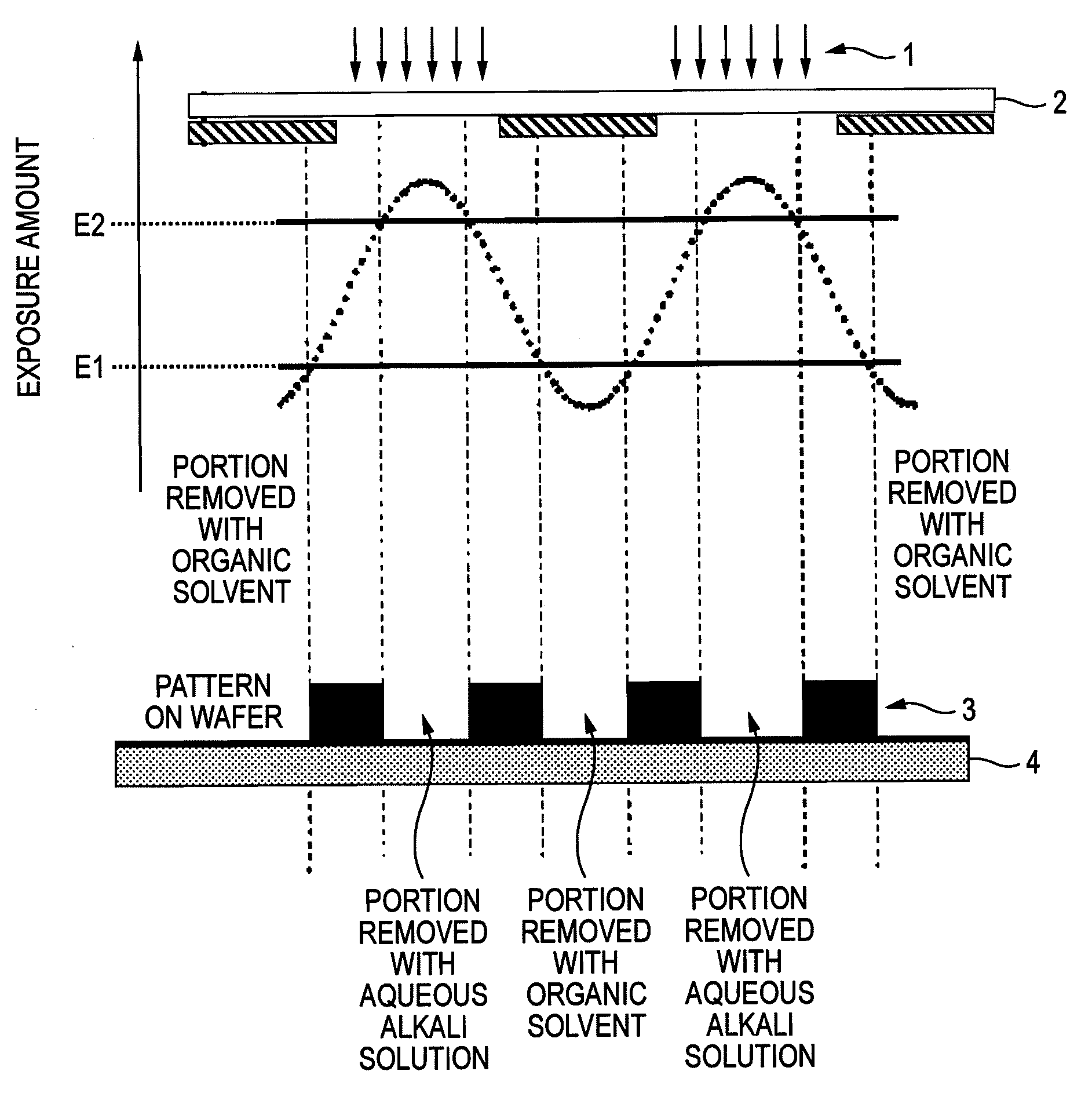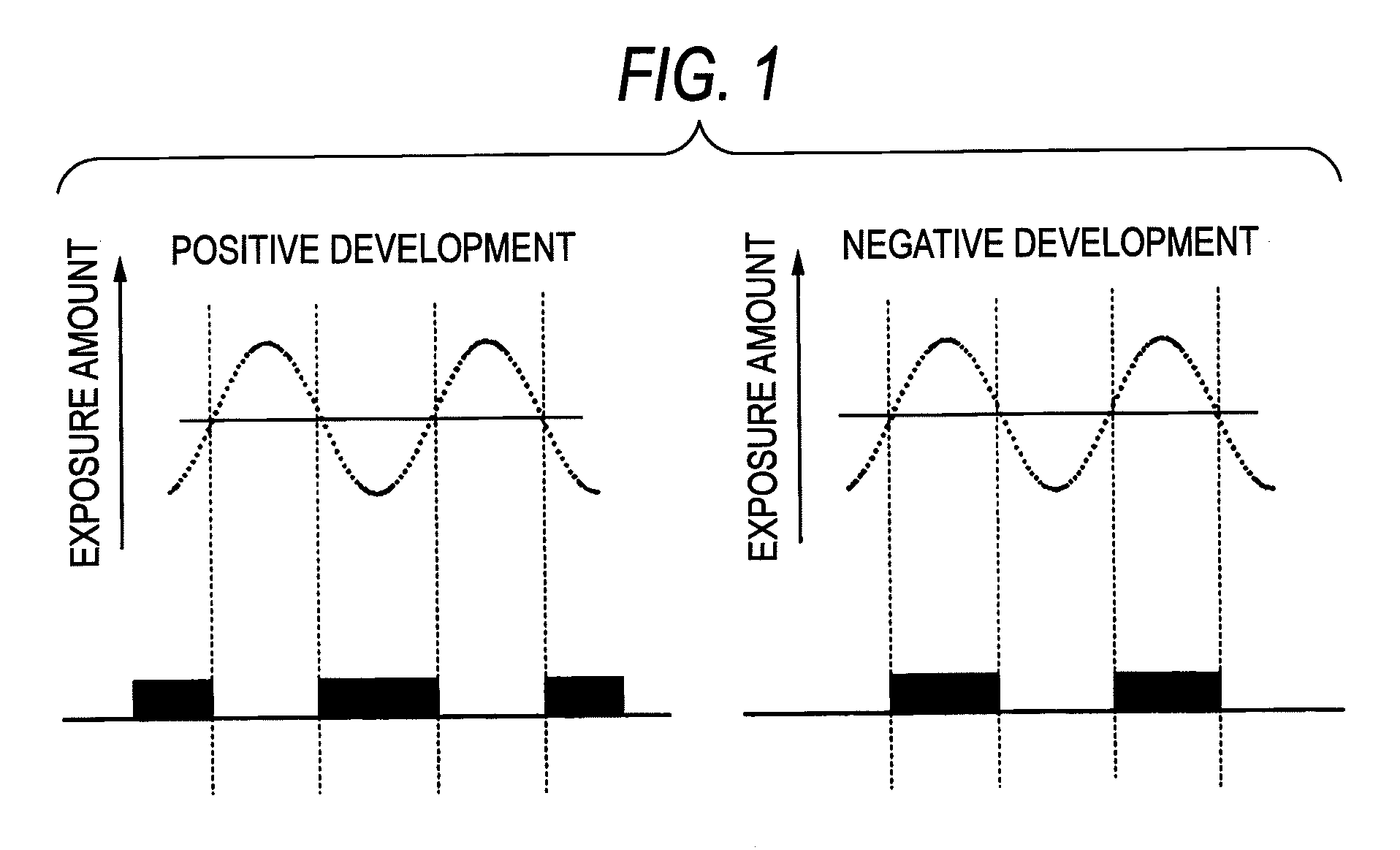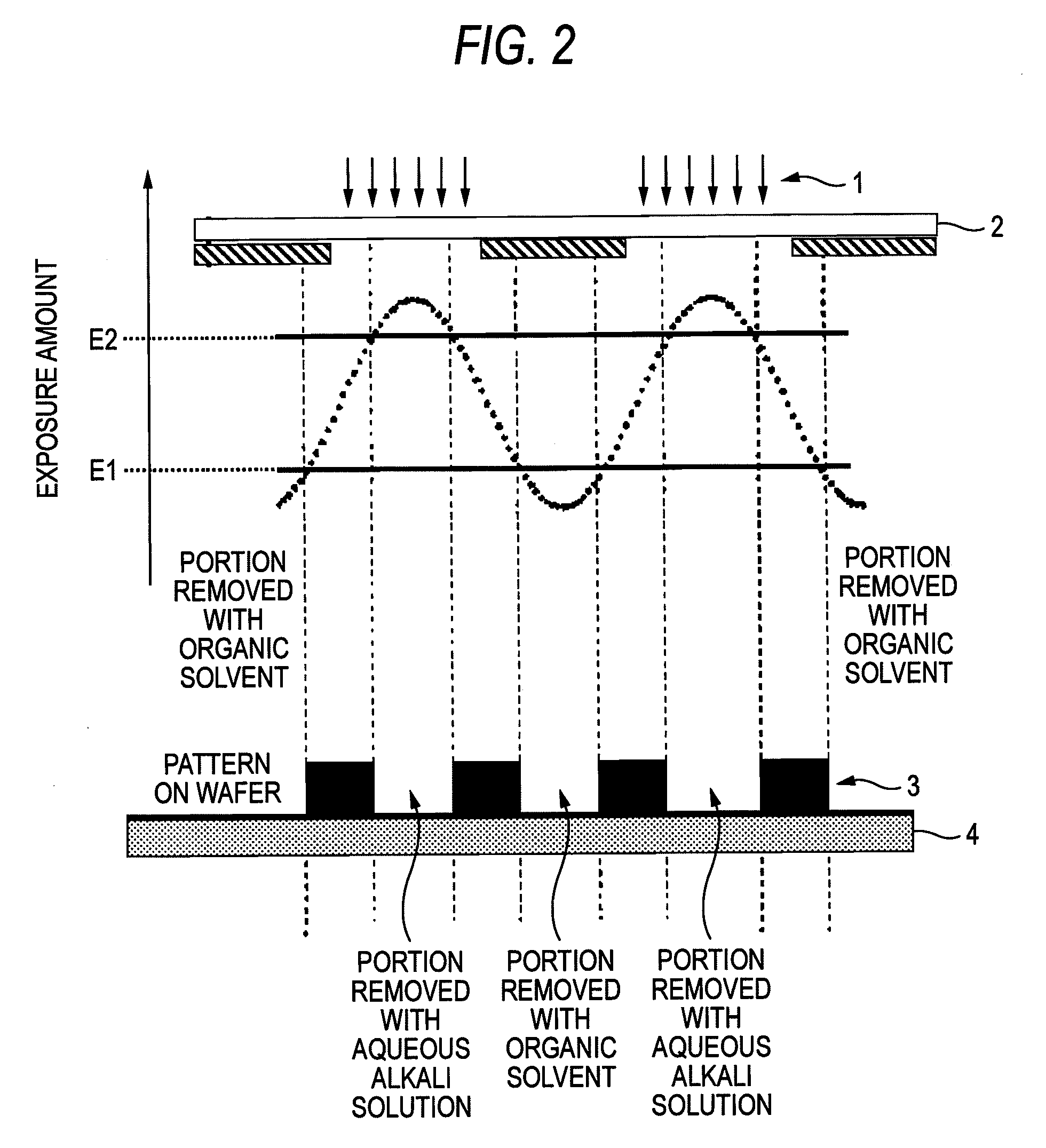Method of forming patterns
a pattern and pattern technology, applied in the field of pattern formation, can solve the problems of resist layer degradation, resist description suitable for immersion lithography, and the topcoat-utilized image formation method that has been known to fail to fully satisfy the performance capabilities required for immersion lithography, etc., to achieve the effect of reducing the appearance of development defects and reducing the roughness of the line edg
- Summary
- Abstract
- Description
- Claims
- Application Information
AI Technical Summary
Benefits of technology
Problems solved by technology
Method used
Image
Examples
synthesis example 1
Synthesis of Resin (X1)
[0467]In 250 ml of propylene glycol monomethyl ether, 43.6 g (0.1 mole) of 4-[bis(trifluoromethyl)-hydroxymethyl]styrene is dissolved. To the resultant solution, 0.20 g of 2,2′-azobis(2,4-dimethylvaleronitrile) (V-65, trade name, a product of Wako Pure Chemical Industries, Ltd.) is added as a polymerization initiator. This solution is stirred for 4 hours at 70° C. in a stream of nitrogen. Thereafter, the reaction solution is poured into 1 L of hexane with vigorous stirring. Resin thus precipitated is washed with ion exchange water, filtered off, and dried in a vacuum. Thus, 39 g of white resin is obtained. The weight average molecular weight and polydispersity (Mw / Mn) of the thus obtained Resin (X1) are 7,500 and 1.65, respectively.
[0468]In the manners similar to the above, Resins (X2) to (X8) are synthesized.
[0469]Structural formulae of Resins (X2) to (X8) are illustrated below. The ratio (by mole) between structural units, weight average molecular weight and...
synthesis example 2
Synthesis of Resin (A1)
[0472]In a stream of nitrogen, 20 g of 6:4 (by mass) solvent mixture of propylene glycol mnomethyl ether acetate and propylene glycol monomethyl ether is put in a three-necked flask and heated up to 80° C. (Solvent 1). A monomer mixture composed of γ-butyrolactone methacrylate, hydroxyadamantane methacrylate and 2-methyl-2-adamantyl methacrylate in proportions of 40:25:35 by mass is added to a 6:4 (by mass) solvent mixture of propylene glycol mnomethyl ether acetate and propylene glycol monomethyl ether, thereby preparing a 22 mass % monomer solution (200 g). Further, an initiator V-601 (a product of Wako Pure Chemical Industries, Ltd.) is added to and dissolved in the monomer solution in an amount of 8 mol % based on the total monomers. The resultant solution is added dropwise to the Solvent 1 over 6 hours. After the conclusion of dropwise addition, reaction is made to continue at 80° C. for additional 2 hours. The reaction solution obtained is allowed to sta...
example 1
[0477]An organic antireflective film ARC29A (a product of Nissan Chemical Industries, Ltd.) is applied to a silicon wafer surface, and baked at 205° C. for 60 seconds, thereby forming a 78 nm-thick antireflective film. On this film, the resist composition Ra1 is spin-coated, and baked at 120° C. for 60 seconds, thereby forming a 150 nm-thick resist film.
[0478]Then, the protective film composition Tx1 is spin-coated on the resist film, and baked at 90° C. for 60 seconds, thereby forming a 30 nm-thick protective film on the resist film.
[0479]The thus obtained wafer is subjected to immersion exposure via a mask for pattern formation, wherein purified water is used as an immersion liquid and PAS5500 / 1250i equipped with a lens of NA=0.85 (made by ASML) is used as an ArF excimer laser scanner. After the exposure, the wafer is spun at revs of 2,000 rpm, and thereby the water remaining on the wafer is removed. Then, the wafer is subjected successively to 60 seconds' heating at 120° C., 60 s...
PUM
 Login to View More
Login to View More Abstract
Description
Claims
Application Information
 Login to View More
Login to View More - R&D
- Intellectual Property
- Life Sciences
- Materials
- Tech Scout
- Unparalleled Data Quality
- Higher Quality Content
- 60% Fewer Hallucinations
Browse by: Latest US Patents, China's latest patents, Technical Efficacy Thesaurus, Application Domain, Technology Topic, Popular Technical Reports.
© 2025 PatSnap. All rights reserved.Legal|Privacy policy|Modern Slavery Act Transparency Statement|Sitemap|About US| Contact US: help@patsnap.com



